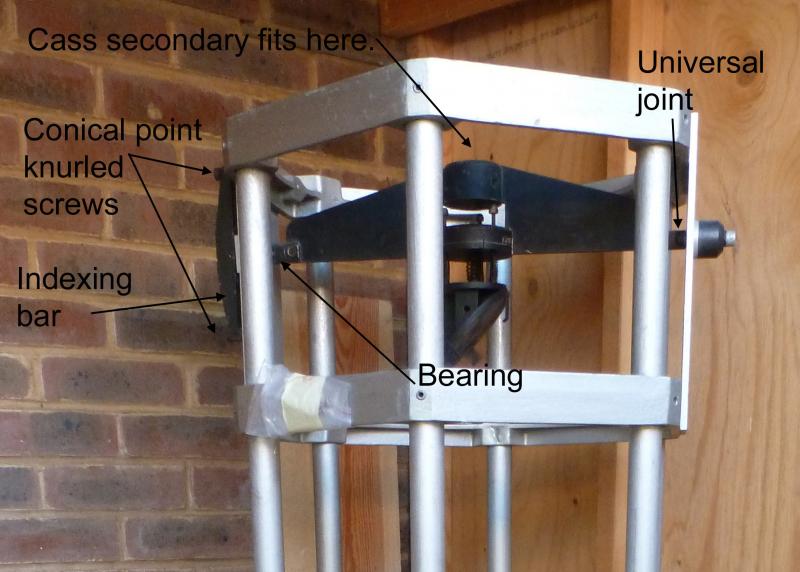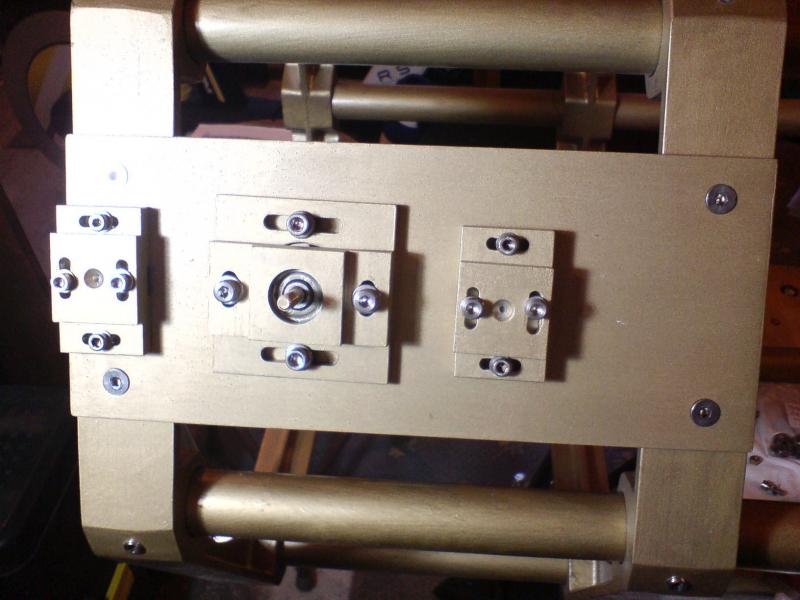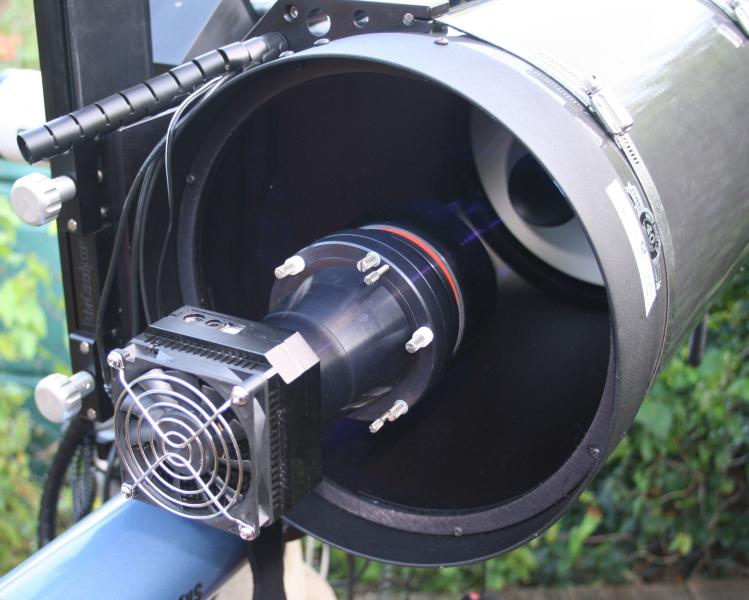Convertible telescopes
2021 July 31
From time to time, one comes across the idea of a telescope that has more than one optical configuration. This was quite common with large professional telescopes in the past. For amateurs, there may be an attraction in having just one telescope that has the possibility of operating in both short and long focal-length forms. Typically, the short form will be more useful for imaging faint objects, because it will be a ‘fast’ system, with a low focal ratio, while the long form will be more useful for visual observation, and imaging of small objects.
In my experience, the trouble with all this is firstly that there are usually compromises involved in making a convertible system which mean it cannot work as well as a fixed system, and secondly, that the effort of converting between the two forms tends to be so great that, in practice, one settles for one configuration permanently. This is of course my personal opinion, and I would be interested to hear the opinions and experiences of others.
Cassegrain–Newtonians
The most common conversion idea in the past was to have a reflector that could be used in either Cassegrain or Newtonian forms, by having two swappable secondary mirror assemblies, with focusers at both the back of the (perforated) primary mirror and the side of the tube. Typically, the Newtonian configuration would be ƒ/4–5, and the Cassegrain ƒ/8–15. Of course, you could achieve a similar result far more easily by combining a simple Newtonian with a Barlow lens, but Barlows in the past often introduced chromatic aberration, and collimation at low ƒ/numbers could be tricky.
The English manufacturer Fullerscopes (later Broadhurst, Clarkson & Fuller) advertised such Cassegrain–Newtonian systems from the 1970s to 1990s. They worked by having two secondary mirror cells on shafts that could be alternately plugged into the spider central ring holder. On swapping, it would take a lot of work to get the positioning and collimation of the secondary right again: it was not a thing you could just do quickly during a night of observing.
Another English company in the same period, AE Optics, produced similar telescopes, and member Alan Snook has sent me some pictures of a 14-inch example that he has been restoring. This features an ingenious, but ultimately not very successful attempt to solve the readjustment problem. The design has both secondary mirror cells at opposite ends of the same shaft. The shaft is fixed to a two-vaned support, in place of the usual four-vaned spider, and the whole assembly can rotate in a plane at right angles to the (skeleton) tube. To make the collimation reproducible, AE provided the secondary support with an indexing bar outside the tube, rotating with it, and a conical screw in the bar that is supposed to engage with one of two adjustable plates provided on the tube exterior.


Alan tells me that he is mystified as to how this system can ever have worked well – the secondary support lacks the rigidity required. It seems to me, also, that the secondary mirror not in use would be bizarrely exposed to dirt, dampness and potential damage, sticking out of the front of the tube. This telescope cost £3,000 originally; Alan comments that the price of a new Range Rover at that time was £230 less.
The Fastar/HyperStar system
In the late 1990s, Celestron began to market an add-on for their ƒ/10–11 Schmidt–Cassegrain telescopes, called the Fastar. This was a lens system and camera adapter that could replace the convex secondary mirror in Fastar-compatible telescopes, converting the instrument to an astrograph at ƒ/2. The product was soon discontinued by Celestron, but they continued to label telescopes with the removable secondary assembly as ‘Fastar’, and Starizona took over making the converter lenses, now badged as HyperStar. The HyperStar has gone through four successively improved versions and continues to be quite popular.

I have been using a C11 with a HyperStar 3 system for my wide-field deep-sky and cometary imaging for over 10 years. In order to get good results with a QHY8 camera, I have found that, in addition to collimating the HyperStar, I need to fit a camera tilt adjuster between the HyperStar unit and the camera – coincidence of the focal plane with the detector plane is critical at ƒ/2. The camera has to be placed at the correct distance from the lens, otherwise focus may not be achievable within the range of movement of the primary mirror; there are various adapters made to achieve this. Obviously, the camera body needs to be small enough not to block out too much light, and there is no getting round the irregular diffraction effects that result from wires crossing the aperture, though these are only obvious on very bright stars. The HyperStar allows the installation of a filter in front of the camera, but narrowband filters will not work well at ƒ/2. Broadband light-pollution filters do work, but the system produces vignetting and a colour gradient; these need to be carefully corrected with flat frames.
The convertible aspect of the HyperStar means that you can unscrew the whole unit and replace it with the secondary mirror again to make the telescope usable visually. I have not done this for many years. I spent so much time getting the collimation and camera tilt correct, and arranging the wires neatly, that I just do not fancy it; nor do I wish to run the very real risk of dropping the secondary, or the HyperStar lens, or breaking the fragile corrector plate through application of too much torque. I have other, long-f/ratio telescopes to use, so I leave well alone.
These days, Celestron also make the RASA (see the review in the 2019 December Journal; 129(6), p.366), which is a non-convertible ƒ/2.2 astrograph, suggesting they too have decided it is better to fix a telescope to do one thing. But what do you think?
David Arditti, Equipment & Techniques Section Director
| The British Astronomical Association supports amateur astronomers around the UK and the rest of the world. Find out more about the BAA or join us. |
